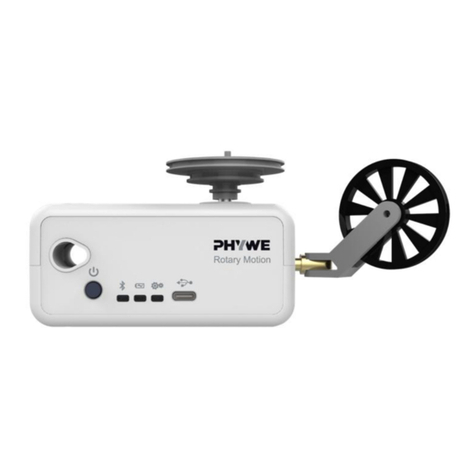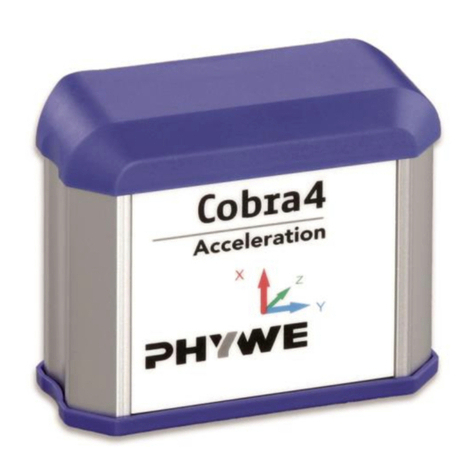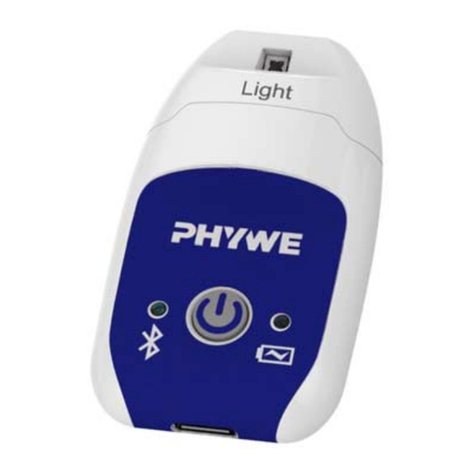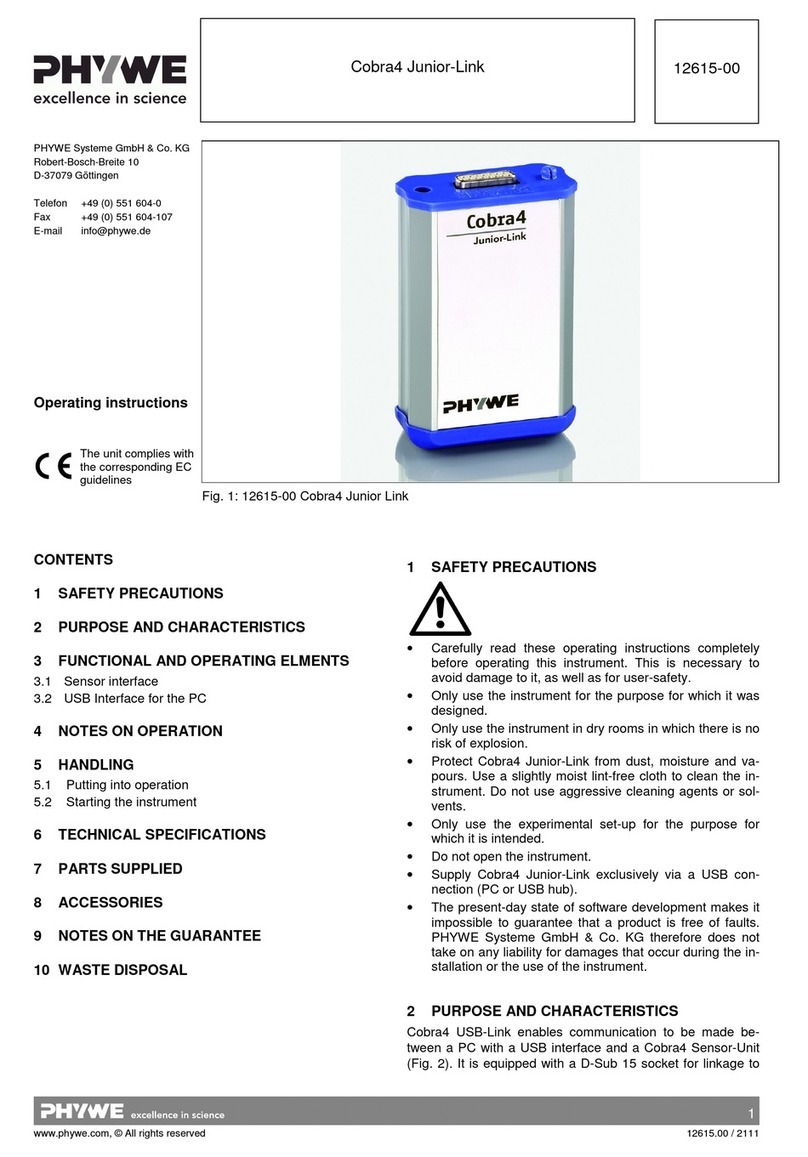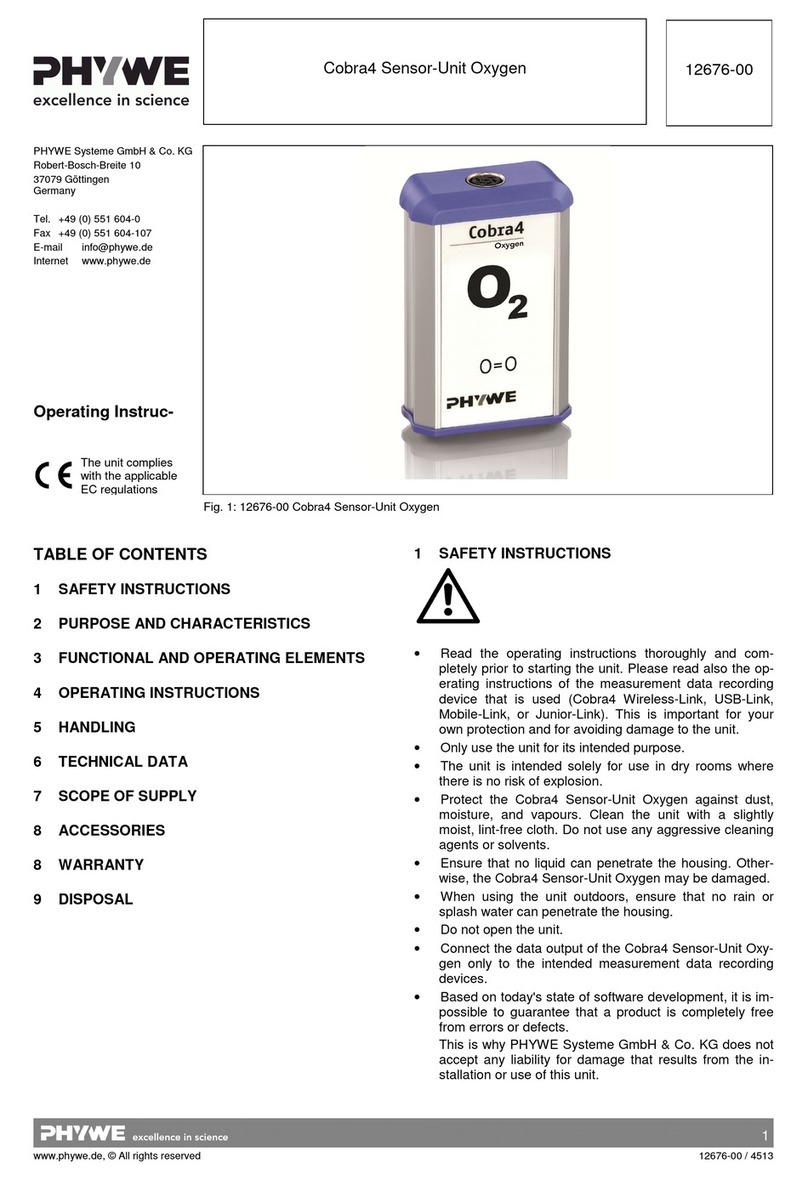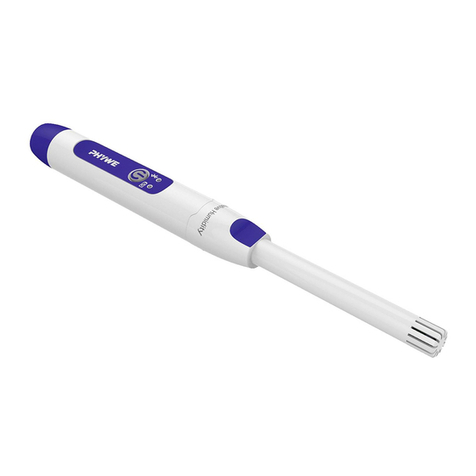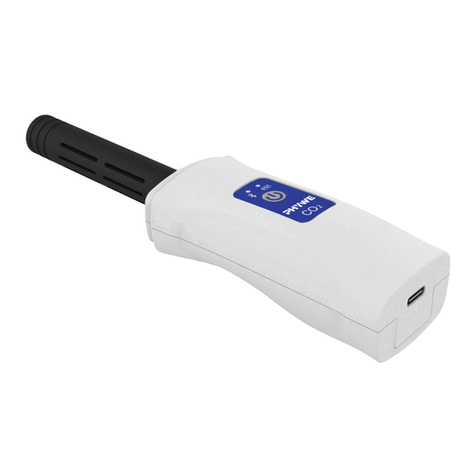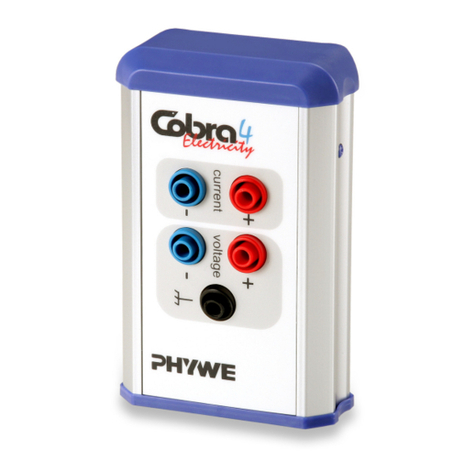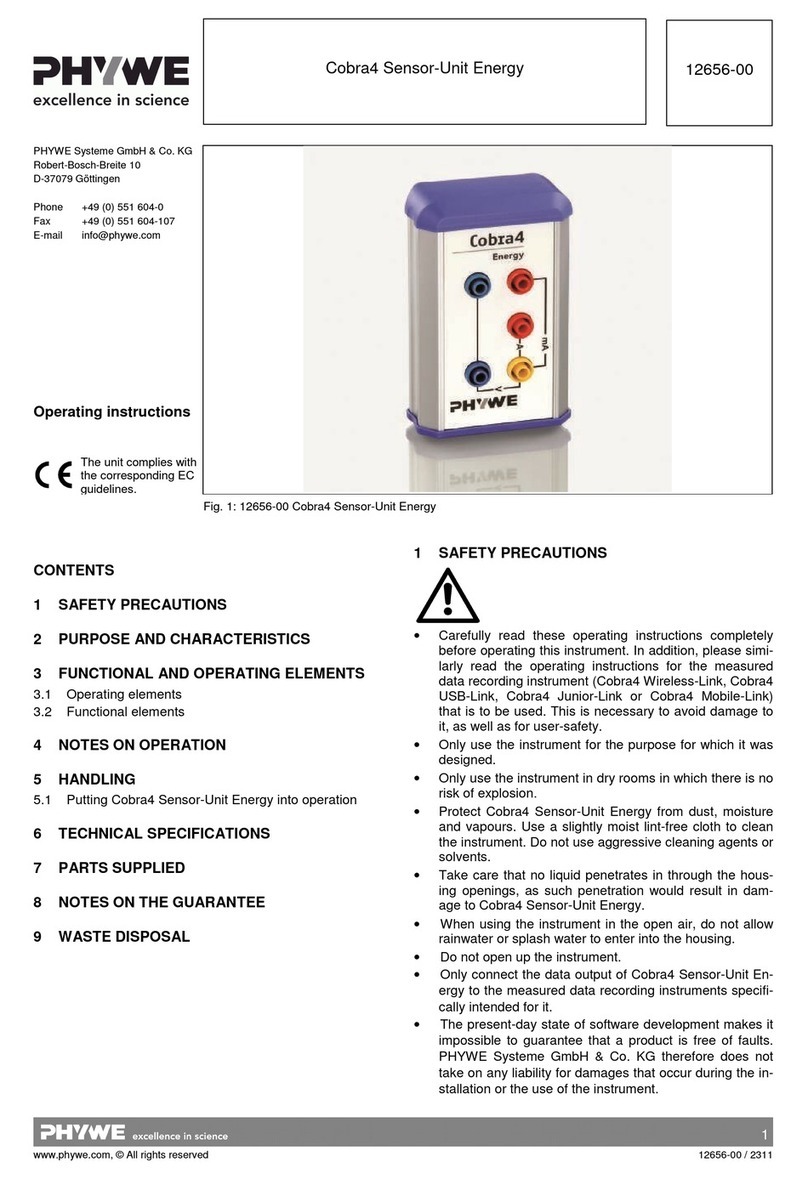
2
www.phywe.com, © All rights reserved 12936-00 / 0920
for monitoring, treating or alleviating illnesses or diseases. As
a consequence, it is not subject to the strict constraints of the
Medical Devices Act.
3 FUNCTIONAL AND OPERATING ELEMENTS
3.1 Operating elements
The sensor has an on-button and two LEDs for indicating the
Bluetooth and battery charge status.
On-button
To switch the sensor on and off in Bluetooth mode, the power
button must be pressed for longer than 3s. If the sensor is to
be connected via USB, it is not necessary to press the power
button.
Bluetooth-LED
Flashing red every 2 seconds
Flashing green every 2 seconds
Connected to the ter-
minal device
Flashing green every 4 seconds
Battery charge LED
Flashing red every 2 seconds
Charging process
completed
3.2 USB port
The battery, which is permanently installed in the sensor, is
charged via the type C USB port. Furthermore, communica-
tion with a computer takes place via this interface.
4 NOTES ON OPERATION
For safety reasons, the Cobra SMARTsense sensor may only
be used when the sensor is not connected to mains voltage!
To do this, make sure that either
a) The Cobra SMARTsense sensor is not connected to
a charger via USB.
b) If a USB connection to a laptop is established, it is
used in battery mode with the power supply discon-
nected, or
c) If there is a USB connection to a standard PC or
laptop with a power supply unit, these are con-
nected to the mains voltage via a floating isolating
transformer.
This device fulfils all of the technical requirements that are
compiled in current EC guidelines. The characteristics of this
product qualify it for the CE mark.
This instrument is only to be put into operation under special-
ist supervision in a controlled electromagnetic environment in
research, educational and training facilities (schools, universi-
ties, institutes and laboratories).
The individual connecting leads are each not to be longer
than 2 m.
The instrument can be so influenced by electrostatic charges
and other electromagnetic phenomena (HF, bursts, indirect
lightning discharges) that it no longer works within the given
specifications. Carry out the following measures to reduce or
eliminate the effect of such disturbance: Ensure potential
equalization at the PC (especially with Laptops). Use screen-
ing. When a total failure of the instrument occurs, unplug it
and plug it back in again for a reset.
5 HANDLING
This section describes the start-up of the sensor and the re-
cording of measurement data. Please read this section thor-
oughly in order to avoid failures or operating errors.
5.1 Start-up
Switch on the sensor by pressing the power button for more
than 3s. Now the Bluetooth LED flashes red. Start the soft-
ware and select the sensor.
If the sensor is to be used via the USB interface, it does not
need to be switched on. The sensor is connected directly to
the end device using the supplied USB cable.
There is a 9-digit code
on the back of the
sensor (Fig.2). The
last 4 digits of the
code are displayed as
the sensor name in the
software (Fig.3). This
enables the precise
assignment of the
sensors within the
software.
Fig. 2
Fig. 3
Selection of the sensor via the Bluetooth interface
Make sure that the Bluetooth interface is activated on the
terminal device (PC/Tablet/Smartphone) and that the soft-
ware is allowed to access the interface.
After the sensor has been selected in the software, the LED
flashes green to indicate that the connection has been estab-
lished correctly. After the sensor has been coupled with the
software, the sensor is no longer visible to other users in the
software, and therefore can no longer be selected.
If the sensor is switched on and not connected, it switches off
automatically after 5 minutes.
Selection of the sensor via the USB interface
For this purpose the sensor must be plugged into the USB
port of the end device. It is not necessary to switch on the
sensor. The sensor is automatically recognized and dis-
played. It can be selected and connected directly.
Connecting the electrodes
Attach the disposable electrodes firmly to two fingers. The
electrode should be on the fingertip. The exact location of the
sensors is shown in Figure 2.
Fig. 2
